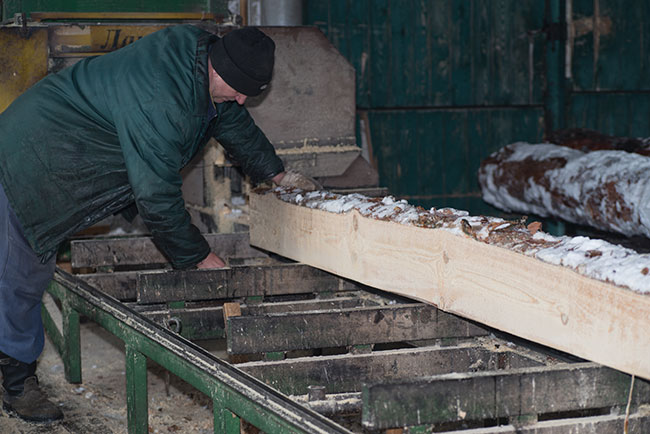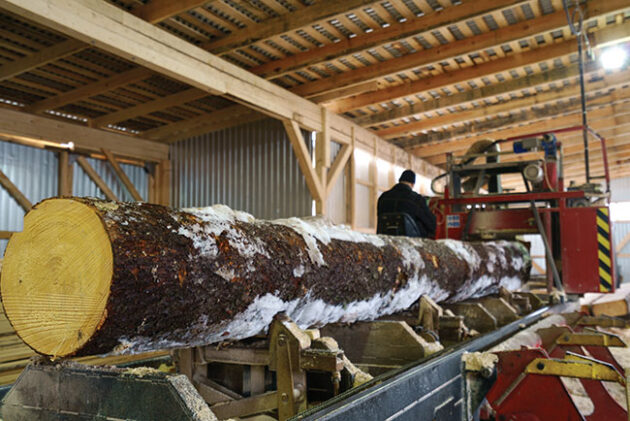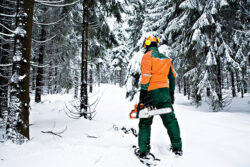
Features
Safety: Combating cold stress
Cutting the risk of workers injury
October 23, 2023 By Patrick McDonald
 Photo © Natalia / Adobe Stock
Photo © Natalia / Adobe Stock As summer fades into fall, and fall gives way to winter in Canada, freezing winds, low temperatures, and moisture come storming in. Since our industry never takes a day off, it’s crucial for workers, supervisors, and managers to join forces and keep our workforce warm and safe. In this article, we will explore how to measure and manage cold stress and what each group can do to mitigate the risk.
Cold stress: effects on the body
Hypothermia: According to the National Institute for Occupational Safety and Health (NIOSH), when exposed to cold temperatures, your body starts losing heat faster than it can produce it. Prolonged exposure to cold will eventually deplete your body’s stored energy, resulting in hypothermia, or an abnormally low body temperature. A body temperature that is too low affects the brain, making the victim unable to think clearly or move well.
Frostbite: An injury caused by freezing can cause loss of feeling and colour in affected areas. It most often affects the nose, ears, cheeks, chin, fingers, or toes. Frostbite can permanently damage body tissues, and severe cases can lead to amputation. In extremely cold temperatures, the risk of frostbite is increased for workers with reduced blood circulation and those not dressed appropriately.
Chilblains: Repeated skin exposure to cold temperatures permanently damages the capillary beds in the skin, and redness and itching will return with additional exposure. Typically, redness and itching occur on cheeks, ears, fingers, and toes.
Measuring cold stress
To measure the risk of cold-related health issues, consider the following environmental factors:
- Temperature: The ambient air temperature is a crucial factor. Extremely cold temperatures increase the risk of cold stress.
- Wind chill: Wind speed and direction are critical as wind can significantly accelerate heat loss from the body. The Wind Chill Index helps estimate the cooling effect of the wind on exposed skin.
- Moisture: Wet or damp conditions, including rain, snow, or sweat-soaked clothing, can compound cold stress by increasing body heat loss.
- Duration of exposure: The length of time workers are exposed to cold conditions is crucial. Prolonged exposure increases the risk.
- Work intensity: Physical activity and the level of exertion can generate body heat but can also lead to sweating, which, when combined with cold conditions, increases the risk of cold stress.

Photo © Wisky / Adobe Stock
What can workers do?
- Dress warm: Clothing is your first line of defense against the cold. Think layers, from moisture-wicking (moves sweat off your skin) base layers to insulated outerwear.
- Boots: Choose insulated and waterproof boots to keep your feet warm and dry.
- Gloves: Various types of winter gloves will keep your hands safe from cuts and the cold with protection down to -35 C.
- Warm-up routine: Incorporate warm-up exercises into your daily routine. It’s like a pre-workout for your muscles.
- Take breaks: Take your scheduled breaks in warm areas.
- Fuel up: Warm beverages (non-caffeinated drinks) and high-energy food are your best friends in battling the cold.
- Stay informed: Track weather conditions and educate yourself about the early signs of cold stress.
What can supervisors do?
- Lead by example: Demonstrate to your team how to dress appropriately for the weather.
- Job rotations: Consider rotating workers in and out of the cold to prevent overexposure. Allow workers time to acclimatize when temperatures suddenly drop.
- Monitor conditions: Keep a close eye on weather conditions; adjust work schedules accordingly.
- Encourage breaks: Ensure your team takes scheduled warm-up breaks for morale and safety.
- Windbreaks and shelter: Provide windbreaks or sheltered areas where workers can take breaks and warm up.
What can management do?
- Plan ahead: Assign the maintenance department to ensure doors are insulated and in working order, and that heaters throughout the site are safe, serviced and working correctly.
- First aid and emergency response plan: Include procedures for treating cold-related injuries in your first aid procedures and emergency response plan, as suggested by the Nova Scotia Department of Labour and Advanced Education.
- Workforce training: Support ongoing training for workers. An informed workforce is better equipped to stay safe.
- Risk assessment: Conduct a risk assessment considering all relevant factors, work activities, and clothing worn by employees to determine the overall risk of cold stress.
- Cold exposure control plan: Create a cold exposure control plan that outlines the program framework and includes practical and effective control strategies to mitigate the risk of cold stress. Document responsibilities for management, supervisors, employees, and contractors.

Physical activity and the level of exertion increases the risk of cold stress. Photo © Val Thoermer /Adobe Stock
Working in the forest industry, where winters can be harsh, teamwork is key to managing cold stress. Workers, supervisors, and management each have critical roles to play in keeping the workforce warm and safe. So, let’s continue working together, staying informed, and ensuring that safety and warmth go hand in hand, making every workday a cozy one, even in the coldest of conditions.
Patrick McDonald is a safety specialist at Canfor, with over 15 years of experience working as a safety professional in Canada. He specializes in developing safety solutions in the industrial manufacturing industry.
Print this page